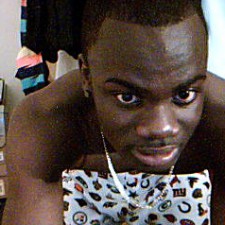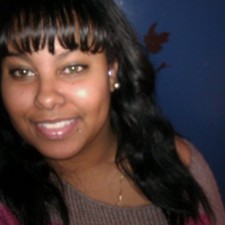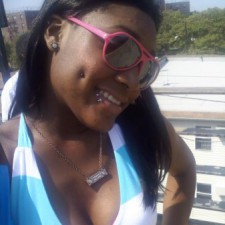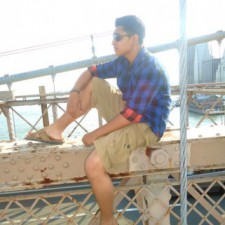You must be logged in to reply to this topic.
- Individual Progress Report For Group Project One
-
November 9, 2011 at 4:42 pm #12486

shakirahgreenidgeMemberShakirah Greenidge : Professor Halleck
My group’s project is based on research of the Promenade which is perpendicular to the Brooklyn Bridge and parallel to the Hudson River. This is a wonderful part of the Brooklyn Heights and DUMBO area of Downtown Brooklyn. Here many come to relax while watching the water traffic of New York’s famous Hudson River. The hands on component of this research will be a model of the Brooklyn bridge and the promenade, as if they were to be decorated for the Christmas season. This includes Christmas reefs and lights to cover the perimeter of the bridge. The color scheme will be red and green with white lights with green Christmas reefs with red bows. Because of the vastness of the Bridge and the Promenade, it will take a lot of math to figure out the amount of lights and reefs that will be needed to decorate the bridge on a budget. For example: if each reef costs $X and the there are 2 string of lights for every reef which cost $Y, how much would be the cost to decorate the length of the bridge on both sides and the Promenade (note: a string of lights is 10 feet with a reef in between each string). Also, there will be a calculation of the amount of carbon dioxide and energy needed to light the bridge’s seasonal decoration and how this affect the atmosphere. So far, I have bought the popsicle sticks and tissue paper to decorate and create the bridge even though we as a group have yet to actually start. I will design the actual bridge and help with the research and math also.
November 10, 2011 at 5:58 pm #14506
sbaileyParticipantShavon Bailey: professor halleck
My group project assignment is how much pink paint would be needed to cover all the wooden planks on the Brooklyn Bridge in honor of breast cancer and also how much time would be spent doing so. The Brooklyn Bridge is a landmark to many people who either live in New York City or come just to visit. breast cancer is a disease who has a great impact on not only women but their family and friends by incorporating both we are bridging the gap between two major elements whit a great deal of impact
The connection to the bridge would actually be covering each wooden plank that is on the bridge with pink paint. In our project we will measure each wooden plank indivually and calculate how much paint would be need to cover all. Then we would measure the time spent if we were to paint each wooden plank. If we were able to actually do this assignment I think it would bring a great deal of happiness to women who have won the fight against breast cancer and women still struggling with it. Finally we will take a picture of the Brooklyn and bridge using photo shop turn the bridge pink itself for our final presentation.November 11, 2011 at 7:26 pm #14510
ostewart1MemberOlivia Stewart: Professor Halleck
My group project assignment is to drop a non lethal object from an x amount of distance to measure the calculation of the time it will take as if you were dropping it from the bridge. We actually just found out the scientist Galileo did this very same project 400 years ago. That is very inspiring because we are following in wonderful footsteps. The hands on components are a stop watch and a tennis ball ( non-lethal object) dropping it off of a roof. The math and science portion of our projects is measuring the time it will take for the object to drop vs the gravity and the calculation of time , as if it was falling from the bridge. I have contributed research of the Brooklyn Bridge as its height , width , length and its distance from the water. Also I will be standing at the bottom holding the stopwatch along with my partner Jonathan. Finding out how long it takes the tennis ball to drop to the floor. Finally I will be contributing the non lethal object and setting up the power point for our presentation. I really love my group and just know with all of us together we are definitely going to get an A.
November 11, 2011 at 8:06 pm #14511
trevi17MemberSylvester Trevi: Prof. Reitz
For my group, the project is based on the research of the Promenade which is vertical to the Brooklyn Bridge and equivalent to the Hudson River. This work of artifact that spans over the east river and connects Manhattan and Brooklyn was completed in 1883. The Brooklyn Bridge is known for its known for its views over Manhattan piers, peaceful environment and walk. Yes… that’s fun yet, have you ever thought about the amount of electricity (Carbon) generated into these light bulbs people see every time and how many light bulbs are needed? Well, that’s my future contribution to the project… and yet to find out. The hands on component of this research will be a scaled model of the Brooklyn Bridge and the promenade decorated for the Christmas season. The goal is to cover up the perimeter of the bridge with Christmas reefs and lights. The color scheme will be red and green with white lights with green Christmas reefs with red bows to feel the Christmas spirit. But, the math and science components will all be based on the actual size of the Brooklyn Bridge. That is, calculating how many Christmas reefs and lights will be acquired on decorating the actual bridge. Also, how much carbon is needed to generate all those lights? Thus far, I took part in group discussions with other members and putting in an effort to have a first meeting with them…
November 11, 2011 at 8:08 pm #14512
lalayudiParticipantYudi Wu: Professor Reitz:
Our group is doing a poster that is basically about the different trains to our school. Base on the different schedules, it is hard to sit down and discuss more about the project. I try to research on the different trains to our school. I looked at the subway map and try to draw the map. Basically, this project is going to fun and does not need a lot of time to work on it. I can draw the map and then finally, draw it on the poster. We will use markers, color pencils, and some other materials to make it look nice. Besides, we can use a lot more materials. Since, we don’t have much time left, we can start doing right now. At first, we was thinking to do something about the Brooklyn bridge, but a lot of people are doing it. In addition, Brooklyn is huge and there is a lot of things about it. The poster will have a lot of different pictures of Brooklyn and the trains to our school. There will be a map showing the different trains to our school. It is going to be a simple poster with pictures. Hopefully, this is going to be a great and nice little poster that will show students how to take the subway with different trains.
November 12, 2011 at 12:20 am #14513
ostewart1MemberSo Andrea was not able post her response on her own open lab due to error so we decided to use mine but this is her own response
Andrea Sukhu
My groups project is simply measuring the time and distance it takes for an object to fall from the bridge to reach the water. Since we cannot actually complete the assignment using the actual bridge and water itself, we decided to replace the bridge by using a high story building, and water by using the ground floor. The object we decided to use to drop off the building will a be tennis ball. We will also be using a stop watch, most likely from our phones, or ipods to measure the time in distance it takes for the tennis ball to reach the ground. The assignment offcourse is based on a math/science experiment as we all know. The math porprtion of our project will be measuring the time it will take for the tennis ball to drop and hit the floor, as well as a graph based on the time and distance it takes. We will plot the graph by calculating the time converted to distance. For instance, if the tennis ball takes exactly two minutes to hit the floor by 44ft, then it will take four minutes to hit the floor when the building is 88ft. The science porportion of this experiment is the gravity of the tennis ball as it is being dropped.
My part of the group project so far was researching the history of the Brooklyn Bridge. It’s important to have a good background of the Brooklyn Bridge so that when presenting, we will have good background information to introduce our topic. We also each had a part in our “trial and error” report. At first, we tested the experiment out by using a pen as our object and the levels of floors in our school building to measure the distance. After trying this, we realized that it didnt make sense because we didnt know the exact length of the ground floor to the different floors of the building in the atrium. We only knew the time of how far it took to hit the floor. When we do the project, each of us will be split into two groups since theres four members in our group. Romel and I will go up to the building and drop the tennis ball, while Olivia and Romel concentrate on the time it takes for the ball to land on the floor. This assignment seems interesting so far, not to mention that Galileo did our experiment which makes it even more exciting to do it.November 12, 2011 at 1:47 pm #14516
brina92MemberIndividual Progress Report: By Aubrina Halley
Professor Halleck Group:17
In our group project, we are researching the materials used to build the Brooklyn Bridge, as well as the Williamsburg Bridge. We are trying to figure how long both it took for both bridges to be built in comparison. The Williamsburg Bridge is built across the East river. It connects Williamsburg, Brooklyn to the lower east side of Manhattan. While the Brooklyn Bridge is built across Hudson River; connecting downtown Brooklyn and Manhattan. Brooklyn Bridge was completed in 1883, and Williamsburg Bridge opened in 1903. Brooklyn Bridge is one of the oldest surviving suspension bridges, while many built from its time have collapsed. That bridge was built by a german immigrant named John Roebling. When he was no longer able to help with engineering physically, he taught his wife Emily the “higher mathematics and bridge engineering” to help him guide the workers. All together end result was Brooklyn Bridge became a famous landmark. Williamsburg Bridge’s chief engineer was Leffert L Buck, and chief architect was Henry Hombostel.The Williamsburg bridge is famous setting movies being film, for example American Gangster. This bridge and Manhattan Bridge are only bridges that still carry vehicles and train traffic. As our hand-on component we’ll personally go to each bridge, and take pictures of interesting parts bridges, like cables, towers, etc. We’ll use math to compare the bridges to see which one has the most traffic which includes pedestrians. I helped come up with this idea, and I will help take the pictures. We are going to use a power point presentation, and a poster board with different pictures, showing different materials and so forth. Also drawing math calculations illustrations showing time taken to build bridge, and traffic on each bridge. We haven’t met the entire group yet, and still working on smoothing out the ideas, making it clear.November 12, 2011 at 2:12 pm #14517
ana15MemberAna Valerio Pro. Reitz
My group and i (group15) haven’t gotten the chance to sit down and discuss the project so i can only speak on my behalf and what i believe should be done on this project. since communication is such an issue with us i do no know what they want to do. anyways, our main project idea is about the different trains that lead to our school. the idea is still very premature so i’m assuming thats why it still says pending. i was thinking of calculating each person’s trip to the school from where they live at and see whose trip is the fastest or slowest, and how crowded are the trains coming towards our school rather then then others. also you gave us a suggestion about including public health into our project some how and i think that would be a good idea. so we could do something with that, my part could maybe be the research end of the project. use the internet to find the information that we need and present it to my group. in this group project we are going to need to access the internet for research, maybe a poster or 3D diagram of a train, a slide show to present our project and participation from each of the group members.
November 12, 2011 at 2:12 pm #14518
ana15MemberAna Valerio Pro. Reitz
My group and i (group15) haven’t gotten the chance to sit down and discuss the project so i can only speak on my behalf and what i believe should be done on this project. since communication is such an issue with us i do no know what they want to do. anyways, our main project idea is about the different trains that lead to our school. the idea is still very premature so i’m assuming thats why it still says pending. i was thinking of calculating each person’s trip to the school from where they live at and see whose trip is the fastest or slowest, and how crowded are the trains coming towards our school rather then then others. also you gave us a suggestion about including public health into our project some how and i think that would be a good idea. so we could do something with that, my part could maybe be the research end of the project. use the internet to find the information that we need and present it to my group. in this group project we are going to need to access the internet for research, maybe a poster or 3D diagram of a train, a slide show to present our project and participation from each of the group members.
November 12, 2011 at 3:51 pm #14520
zytasia GainesMemberZy-Tasia Gaines Prof Reitz Class (Group #6)
1. A description of your project and all of its parts:
~My project is based on travel time and miles using both the Brooklyn and Manhattan Bridge to the school. Since the project is still pending im not sure exactly if this information would be considered accurate, Our group have made arrangements to meet twice a week for at least 30min the first 2 meetings went well and we brainstormed ideas after that all communication was lost with the other half of the group so 2 out of the 4 that was supposed to attend the meeting agreed on this project idea in hope of approval.
2. A description of the hands-on component.
~The hands on component will include a 3-d model of the Brooklyn Manhattan Bridge with some card board buildings including the school mapping out an aerial view of the entire walk. Hopefully finding mini people or making little stick people to place in the diorama.
3. A description of the math & science component.
~the math and science component will include researching the length of the Manhattan Bridge and comparing it to the information we already have on the Brooklyn Bridge from our previous walk and calculating the time it would take walking the Manhattan Bridge to the school. Then we have find the fastest route, how long it takes from the Brooklyn bridge to the Manhattan bridge add up all of our calculations to give the exact time and how many miles it would be for a person to walk from new York city tech across the Brooklyn bridge through the city to the Manhattan bridge and back to city tech.4. A description of your part in the project:
A. What have you contributed so far? ~ So far I Have Built 3d models of both bridges, and started to do research to find the length of the Manhattan Bridge. Have gone to the group meetings contributing ideas and discussed ideas with the group on what supplies we can bring and how to make 3-D buildings, we were going to start putting things together but since the project hasn’t been approved as of yet we don’t want to go too far to have to start over.
B. What will you contribute?~ hopefully the project is approved then we can all bring our research together and agree on calculations to put in the PowerPoint presentation also I will help the group in building the diorama that includes coloring cutting, pasting ect.. I will also continue on trying to get intouch with the rest of the group, even though the project can be done with 2 people it would be nice to have a full group.November 12, 2011 at 4:49 pm #14521
oneillestMemberVictor Chen: Professor Reitz, (Group 1 )
Me and my group are planning to build a bridge that is made up of glue and toothpick. The toothpick might be changed to pop-sickle sticks, we haven’t concluded yet. The objective is trying to make the bridge withstand a great amout of weight for such a light weight object. The hands-on, will be gluing sticks together and waiting tell it drys before adding more. The physics of bridges includes the concept of Newton’s third law of motion (Action-reaction forces). This is what scientists and engineers use when building todays bridges. It lets us know when building a bridge the force upon the bridge is never alone, such as gravity, air resistance, and moving objects. when forces are on the bridge are added together the sum of the force is defined as load. Engineers have designed serveral types of bridges to withstand all forces of nature, 1) beam bridge consist in horizontal beams. 2)Truss bridge consist of assembly of triangles. 3) suspension bridge truss system beneath the roadway to resis bending.. Thus far i’ve done research on which type structure would be used to create the bridge. Most likely it would be the truss bridge because its one of the more sturdy type. The assembly of traingles will divide the weight more evenly throughout the bridge and that allows for a more stable bridge. As for the future i will try to contribute as much as i can, knowing how difficult and the amount of time will be spent on it.November 12, 2011 at 4:49 pm #14522
dianaguaman92MemberDiana Guaman: Professor Halleck
My group project idea is a comparison of the Brooklyn Bridge with the Williamsburg Bridge. This project is basically going to compare how much time it it took to built both bridges and what kind of materials were used during the construction.
also, we want to determine the hight and length. In addition, we found out that the brooklyn Bridge was designed by a German immigrant and it was opened in 1883. The Williamsburg bridge is across the East River connecting the Lower East side of Manhattan at Delancey Street with the Williamsburg neighborhood of Brooklyn and it was opened in 1903.
The hands on component is to take pictures from both bridges, for example the materials used for the columns of the bridges and the cables that are connected to the columns and more.
The math portion for our project is to find the ratio between the length of both bridges. Moreover, the science portion is to determine how much weight can hold a bridge. So far I have contributed some photographs of interesting parts of the Brooklyn Bridge, even thought my group and I will work together taking more pictures of the other Bridge and will also do the math part calculating the ratio and the capacity that can hold each bridge.November 12, 2011 at 5:48 pm #14524
romelpersaud92Participantprogress report 1
my group project idea is one that i came up with, up until Thursday I was notify by one of my group member that Galileo had done this experiment hundreds of year ago, approx. 400 years ago. i was surprise and happy that we are following in a footstep of a great scientist. our project is simply, measuring the time and distance it takes for an object to fall from the bridge to reach the water. Since we cannot do this experiment on the bridge it self,we will calculate the distance of the bridge and water and recreate this experiment with a tall building, perhaps our school. we our going the calculate the time it will take for that object to hit the ground and convert it as if it was falling from bridge, the object we are using is going to non lethal perhaps a tennis ball my part of the project is setting up the day all of our members meet up and being he supervisor of the group, also i will be dropping the object while from the top, while my group members record the time with an electrical device. the math and science component is the speed the object is traveling vs the gravity and weight. this project seem to be fun and i cant wait to get started. romel
November 12, 2011 at 6:03 pm #14525
omarganiParticipantOmar Gani: Professor Reitz (group 11)
I am working on various modes of transportation, traffic congestion
hands on and also find pictures of the bridges at various stages of its
life and make research on internet. My project is about calculating many people, cars, trains, bikes, and walking use the bridge daily, weekly, monthly and yearly. I also making slide show of the bridge at various stages of its life and find different types of transportation. The research in the internet for interesting finding pictures. I am also trying to built model of bridge with tooth pick and it is physic component. I also trying to find more about my group and trying to discuss more about the project.November 12, 2011 at 6:07 pm #14526
hmasulloMemberHeather Masullo
Prof. Reitz
Group 6My group project based on distance and travel time of the Brooklyn Bridge to the school. Our group has made arrangements to gather up the days we have class to meet in the library as soon as we get out of our classes. It started off well but slowly died out and now two participants of the group have been meeting up. We had decided to come up with a 3d model of the bridge. I’ll be providing the cardboard and photographs of the buildings as well as a skyline for the background perhaps. The math and science component will consist of the calculations of the time it takes to walk both bridges. These calculations will be compared. I have contributed by reporting to the group meetings every Tuesday and Thursday with ideas, supplies, and time management..I will also contribute in building the model, and the arts& crafts portion of the model as well. Also i will strive to get feedback from the rest of the group.
You must be logged in to reply to this topic.


